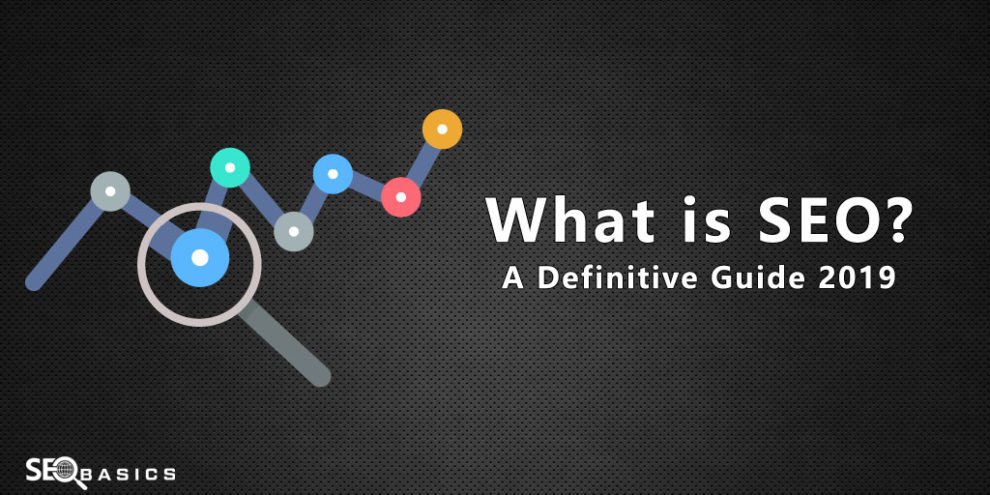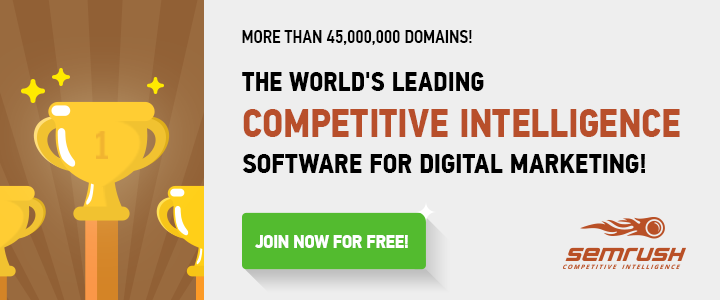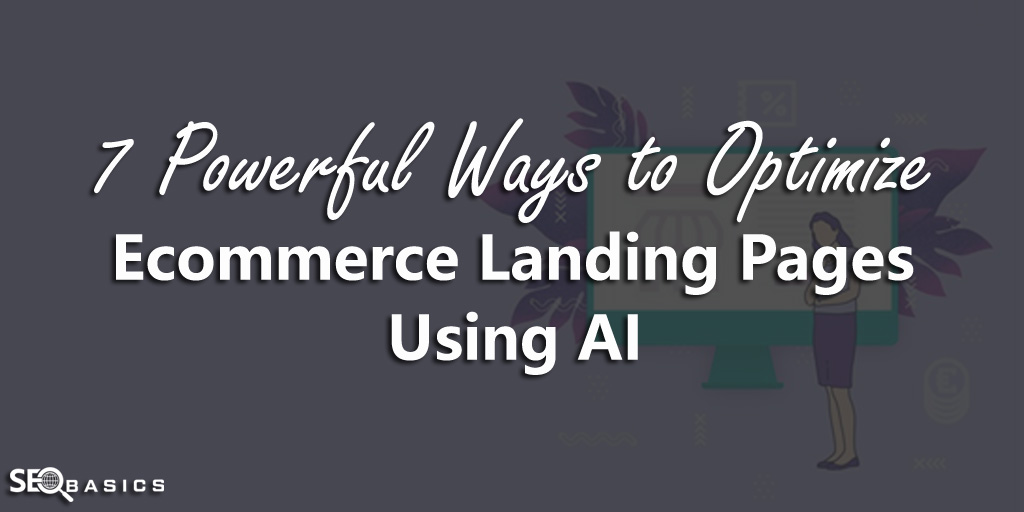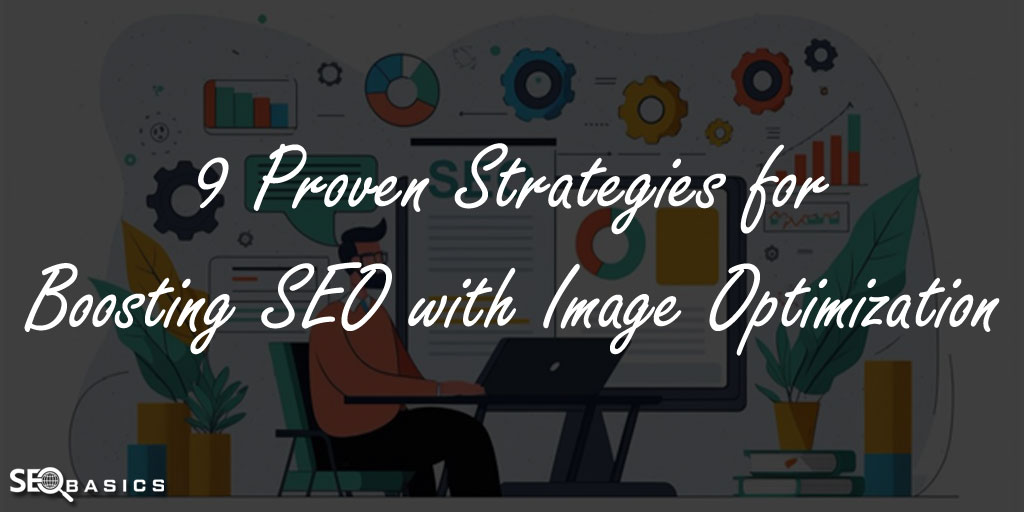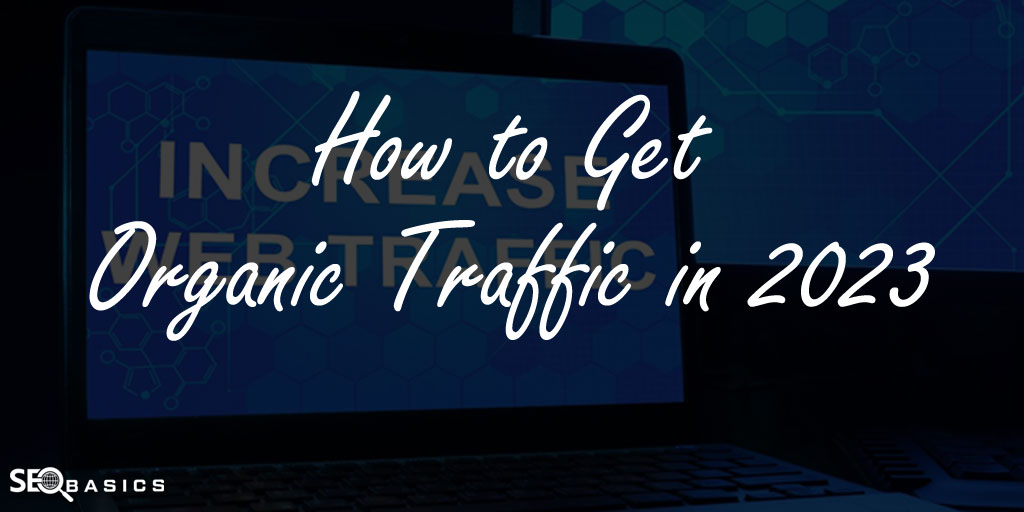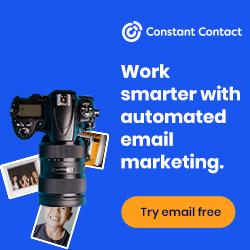SEO in 2019 is a more complex ball game than what SEO experts were previously used to in the previous years. A definitive guide on What is SEO for 2019 should provide information on what determines the ranking of content on search engines. This is because changes in Google algorithm heavily influence how content is ranked on its Google SERPs making it extremely important for you to understand SEO.
First, What is SEO?
SEO is an acronym for ‘Search Engine Optimization’ which refers to the activities responsible for making your website rank highly on search engine result pages (SERPs).
The activities and processes which determine the SEO of content include:
- Emerging trends such as voice search
- Algorithmic search engine changes
- Advancement in technologies such as machine learning, artificial intelligence, etc
- Behavioral practices of your target audience
SEO Statistics – Numbers don’t lie
There are numerous statistical data to support the importance of SEO to businesses.

Benefits of SEO
There are numerous benefits that SEO provides to businesses and individual brands such as:
• SEO Pulls in Quality Traffic
Organic search results are the best traffic any content can have. Why?
This is because organic search results are the consequences of people searching for solutions, products or services that your website is offering.
Your products ranking highly on Google SERPs gives them a better chance of being purchased by users.
• SEO is a Cost-Effective Advertising Solution
Implementing an SEO strategy for your content is free unless you decide to hire the services of a professional SEO expert. SEO decreases your cost per acquisition as it eliminates the need for paid advertisements on your website.
• SEO Opens Up New Market Opportunities
A successful SEO campaign will enable your business to find new markets and opportunities. This is because your products and services will be visible from users located from any part of the world, eventually leading to more business opportunities and business growth.
• SEO Builds Trust and Credibility
Millions of people use Google to search for information available on the internet. This is because they trust the results which Google provides them, especially those that rank highly on the search engine. Your brand appearing on these first pages will definitely build trust and credibility from those millions of users.
• SEO is a Long-Term Strategy
SEO is a long-term strategy. It may take a number of months (6-12) to see optimal rankings, but once there, you can be assured of staying on top for a quite some time. The rankings will only go down due to competition from fellow competitors trying to rank on similar keywords or a change in Google ranking algorithms.
• SEO Educates Your Target Audience
Millions of people use Google to search for information on a variety of things.
An effective SEO strategy will enable your website rank highly on Google SERPs thereby allowing your target audience to consume that information. This educates them on that particular information which would include data on your brand, services or products.
• SEO Provides Better User Experience
Google only ranks content that follows SEO best practices. This is content with a properly defined formatting layout that makes use of header tags such as H1, H2, H3, etc and acceptable keyword density.
These formatting strategies provide users with good user experiences and Google then rewards your website by ranking it highly on its SERPs.
SEO is Constantly Changing
SEO is changing constantly and what used to work effectively in the previous years isn’t as effective in modern times.
During the ‘90s, businesses would manually submit their URLs, Meta keywords to search engines in order to improve their rankings on those search engines. Later, in the mid-2000s, the main SEO strategy was the buying of links from multiple link resellers and submission of those links in bulk to search engines.
However, from 2012 onwards, social media marketing (SMM) became the most sought after SEO strategy. Search engines have evolved and therefore some of those practices that worked many years ago can badly hurt and destroy your current ability to rank.
How Does SEO Work?
All search engines have got two main functions: crawling and building an index.
SEO works by searching within its database using the search terms you provided it and submits its results on a search engine results page (SERPs).
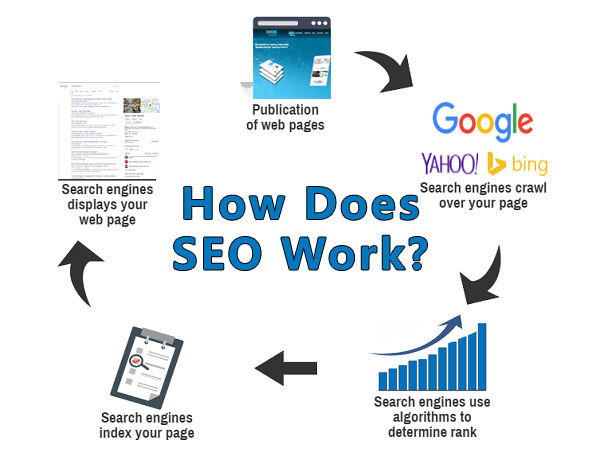
The results of the search query are displayed on the SERPs based on their relevance and popularity. We can, therefore, state that it’s both the relevance and popularity of a data set item that will determine its SEO search.
Types of SEO
SEO is categorized into the nature of techniques deployed by a website. These techniques are grouped into two main SEO processes known as On-page SEO and Off-page SEO.
1. On-Page SEO
On-page SEO refers to the measures taken by a website to improve its position on search engine rankings. It refers to both the content and HTML source codes of a website page that can be optimized. It consists of the following search engine optimization measures:
i) SEO-Optimized URLs
Google’s ranking algorithm gives preference to the first 3-5 words that feature in a URL. You should make sure that your URL wording is descriptive of the content that it has.
The below example shows the URL is descriptive of what the article is about.

ii) Title Optimization
The title must be accurate, relevant and descriptive of the content it contains. This assists the search engine crawlers to get a better understanding of what your content is about.
The below example shows a title with catchy phrases: Best, Free, etc

In order to get the best results, it is recommended that you place your focus keywords as close as possible to the start of your title tags.
Lets, take a look at two examples of article titles.
Example 1: This title is not optimized
Title: ‘2019: Complete List of SEO Tools’
Example 2: This title is optimized
‘SEO Tools: The Complete List for 2019’
Cover Your Titles with Header Tags – H1, H2, H3
Google search engines preference to content containing header tags.
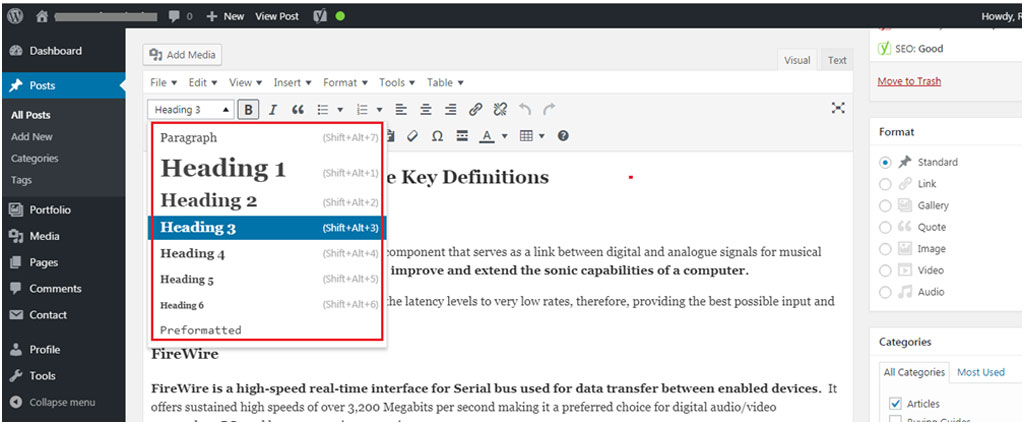
Your WordPress editor provides you with formatting capabilities for inserting header tags to the text within your articles. Having header tags in your articles improves the ranking of those articles in Google SERPs.
iii) Make Use of Multimedia Content
Text content has been the main format of content on the web. Search engines find it easier to crawl through text content as opposed to video and image content formats. However, due to changes in search engine algorithm and internet users preferences, statistics now show that content consisting of video and images is more likely to be shared within social media circles.
iv) Internal and External Linking
Internal and external linking strategies are regarded as the best SEO strategies.
Having external links that link to authoritative websites or online resources boosts your website’s value and authority as bots find it easier to understand what your content is about.
Avoid linking to low-quality and irrelevant online resources as they will negatively affect your ranking ability on search engines.
Internal links in your website help search engine spiders to crawl and index your website faster. Since the internal links provide a gateway to other relevant content within your website, they’re able to keep your visitors much longer on your website which goes towards reducing your website’s bounce rate.
2. Off-Page SEO
It refers to those activities that are performed outside of your website or blog geared towards improving your ranking position on Google SERPs. Off-page SEO techniques include:
i) Create Landing Pages
A landing page objective is to be a Call-to-Action (CTA) feature in a website. They’re a great way of pulling traffic towards your website and for enticing website visitors to subscribe or purchase an item on your website.
An effective landing page should be attached to a paid advert. The paid advert when clicked takes a user directly to the landing page.
What determines the type of landing page your website requires is the nature of CTA: collecting names and emails, downloading an eBook, e-course, etc.
ii) Utilize Social Media
Social media platforms are essential components of any digital marketing strategy for businesses. Social media platforms such as Facebook provides great ways of increasing your brand visibility.
Use it to create short posts about your brand, attach a link, video or image and post them in the numerous Facebook groups that have your target audience.
Learn how to utilize hashtags on Instagram and Twitter effectively as data available has shown that hashtags can greatly increase your website visibility.
iii) Guest Blogging
Guest blogging provides businesses the opportunity to access new target audiences within your market. So, how does it work?
You can reach out to websites that would benefit from your content. You then request them if they would allow you to provide them with a guest blog post consisting of your business contacts.
iv) Broken Link Building
Believe it or not, using broken links to drive traffic to your website is a viable Off-page SEO technique.
Broken link building involves a couple of steps:
- Google and search for broken links that lead to similar content as yours.
- Since that link is ‘broken’ and doesn’t work, reach out to those online resources that have linked to that broken link and request them to link to yours instead.
v) Unlinked Mentions
Your website, product or service may have been mentioned online without that mention having any link back to your website.
There are a couple of SEO tools such as Ahrefs content explorer you can use to find broken links. Once you find those broken links, you then proceed to contact and request the owners of that content containing your mention if they would insert a link back to your website.
vi) Paid Promotions
Paid promotions or sponsored adverts provide businesses with the opportunity to have their brand and be seen by many people. Nearly all social media platforms provide advertising features within their platforms such as Facebook Ads, Twitter, Pinterest Ads, Google Adwords, and Instagram Ads among others.
vii) Steal Links from Low-Quality Web Pages
Yes. You didn’t hear it wrong. I said ‘steal’.
There are a number of low-quality web pages having backlinks from numerous sources because those linking to them aren’t aware of the existence of better web pages.
If your webpage is more informative and in-depth than the existing webpage with numerous backlinks, you can reach out to those online resources and request them to link to your webpage which is of better quality.
viii) Repurpose Your Content
Sometimes, the content that you want to submit to certain websites may have their own specifications regarding their preferred format.
This is where content repurposing and syndication comes here. Restructure your content in the relevant format such as video, infographic and submit it to them.
ix) Community Sites
The majority of people focus on building links to and from high authority editorial websites. It is a good thing but unfortunately, it isn’t enough.
You should develop informative and helpful posts as opposed to only creating and publishing content with CTAs enticing website visitors to purchase items on your website.
Register on community platforms such as Reddit and Quora where you can participate in their discussion forums and provide helpful answers to questions within your domain.
x) Email Marketing
Email marketing helps you send out information to a target audience in the form of digital newsletters, journals, e-books, e-courses allowing you to regularly keep in touch with your audience.
Now get this: Email subject lines are extremely critical when it comes to email marketing.
Your subject line will determine whether your audiences’ curiosity is piqued enough to even open the emails. Therefore, you should always strive to create catchy subject lines.
Example: ‘How this little trick made me increase my sales conversions by 150%’
xi) Advertise
Remember we had mentioned landing pages above? To make landing pages work for you, you need to advertise. Advertising channels are vast and you can leverage on the one that best resonates with your audience.
Social media advertising is one of the most prevalent and best channels today.
Others include paid search and display advertising.
xii) Watch Your Analytics
Google offers analytics that let you know what is working and what’s not. Where is your traffic coming from?
Which blogs and pages are receiving more visitors? Are your paid ads bringing in as much traffic as you would want?
These are all metrics that will help you decide where you need to put in more effort and which channels to trash.
Final Thoughts
Having well researched and informative articles on your website aren’t enough to bring visitors to your website.
For people to be aware of its existence, your articles must be optimized for search engines to crawl and retrieve information based on users query, and this requires SEO.
SEO is a critical and essential component in any digital marketing strategy for brands that want to remain relevant in the current digital environment.



